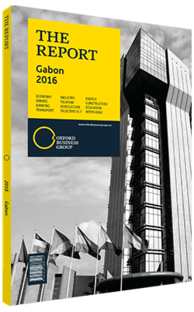Jean Paul Camus, Director-General, Société d’Energie et d’Eau du Gabon (SEEG): Interview

Interview: Jean Paul Camus
What are the main challenges to production and distribution of water and electricity, and what is being done to overcome these issues?
JEAN PAUL CAMUS: For several years now, the main challenge has been to keep up with the growth in demand. Except for in 2015, where we experienced a drop due to the impact of the oil crisis, demand has increased by around 6% per annum, for both water and electricity. There is a real need for investment in production, but also in energy transport infrastructure such as transmission lines and transforming stations. In the last 20 years, SEEG has invested CFA400bn (€600m), and for this year our investment programme is equally shared between energy and water.
In 2016 we have opened a new water treatment station in Ntoum with a capacity of 16,000 cu metres per day, and are moving towards a second one in the same area. The challenge is that we have already exhausted the resources in the area, meaning we will need to build an adduction system from the Komo River, 70 km away. In Port-Gentil, we have a project for a treatment plant with a capacity of 5000 cu metres per day, as well as some projects in the provinces. However, given the smaller consumer numbers, it is easier to find available resources nearby.
For energy, our electrical grid is not well interconnected, which negatively affects the reliability of the system. Nevertheless, we have increased the Owendo power plant capacity by 40 MW, have finalised other network extension projects – such as those in Bel-Air and Diba-Diba – and have begun new ones. Within the provinces, we will be refurbishing 11 power stations, as well as extending the grid. Given the lack of surplus, we have always prioritised extending the grid, instead of securing it.
What are the main drivers of growth in utilities?
CAMUS: Around 10% of the population is still not connected to the water and electricity grid. After integrating these areas, water demand will increase on par with population growth, which stands at around 3% per year.
Once connected, people tend to acquire cable, internet, air conditioning, refrigerators and so on. Of course, there are great needs coming from industrial developments as well, such as the fertiliser plant in Port-Gentil or the special economic zone in Nkok, but these are harder to predict.
How can more private sector participation be encouraged in Gabon?
CAMUS: I believe we must first define the feed-in tariff for electricity. We already have partnerships with the state and SIAT Gabon, but creating a formal framework like those found in other countries would help secure private investments in the sector. In recent years, the state has invested greatly in energy infrastructure, but the expected growth in demand also presents large opportunities for private companies willing to enter the sector.
What sources of energy present the most opportunities in rural areas?
CAMUS: We have made great strides in recent years in connecting rural areas to the water and electricity grid, primarily with the help from international institutions such as the World Bank, the EU and others. Today, many of these improvements lack maintenance, as certain parts are degrading and need additional investments. I believe that in the case of villages, we must find robust measures which are both financially and technically feasible. We are studying options in hydrokinetic power, and in January 2016 we started experimenting with biomass. Through a partnership with SIAT Gabon, we are currently using palm oil waste to create around 700KW-1000KW of power. We believe that biomass is an attractive alternative for the future, given the strong forestry sector.
You have reached the limit of premium articles you can view for free.
Choose from the options below to purchase print or digital editions of our Reports. You can also purchase a website subscription giving you unlimited access to all of our Reports online for 12 months.
If you have already purchased this Report or have a website subscription, please login to continue.

